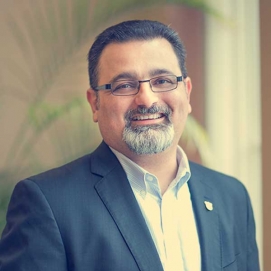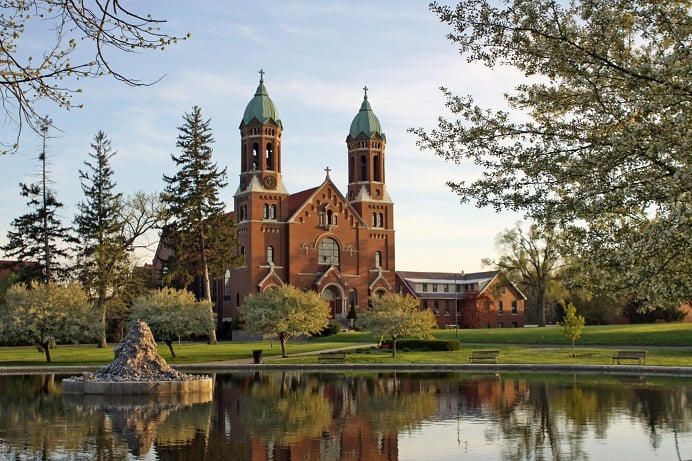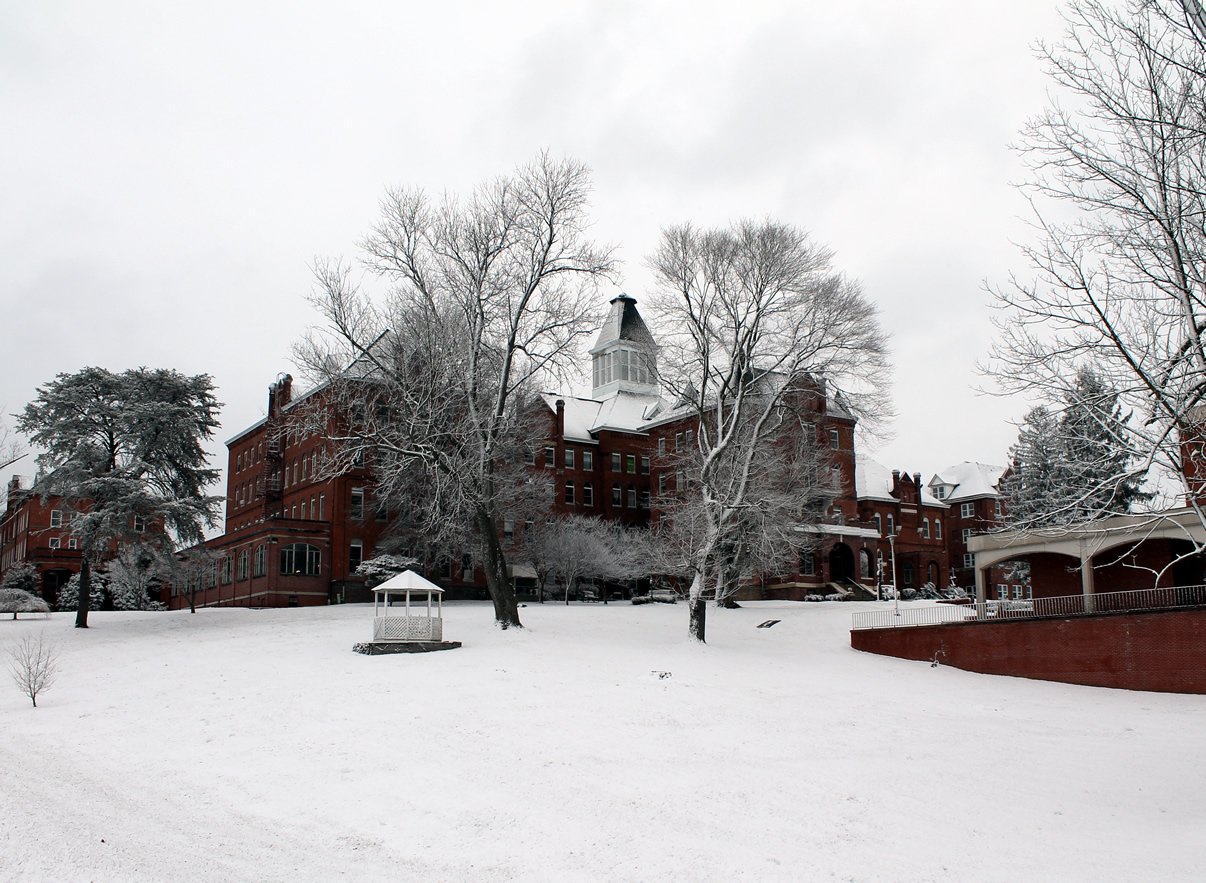Presidents skeptical that some colleges closing can help others survive
Author: Rick Seltzer
Go to Source
Leaders at Sterling College in Vermont arguably should have been elated at the news coming from two other New England colleges in recent weeks.
Green Mountain College, another small liberal arts college in Vermont sharing Sterling’s focus on the environment, said in January that it will close at the end of the spring semester. The next week, Hampshire College in Massachusetts announced a decision to stop admitting new students for the fall semester as it seeks a partnership. Sterling’s applicant pool overlaps with Hampshire’s.
In other words, two of Sterling’s rivals are dropping out of the recruiting game at a time when finding enough students to enroll at nonelite private liberal arts colleges in New England is expected to become increasingly hard. With a lack of growth projected in the number of graduating high school students across the country in coming years, and with colleges in the Northeast expected to be particularly affected by demographic shifts, a few competitors shutting their doors would seem to be just what the doctor ordered for a tiny college like Sterling.
Yet Sterling’s president wasn’t celebrating after word of Green Mountain’s closure broke.
The college has a great opportunity to be the only environmentally focused private college in Vermont, said its president, Matthew Derr. That opportunity does not change the fact that Sterling will need to expand its applicant pool in the face of the drastic demographic changes coming in the future, though. Nor does it change the fact that private colleges aren’t competing solely with other private colleges facing financial challenges.
“I think institutions that are thinking about the closure of competitors as their solution are being pretty shortsighted about the real demographic shift that’s coming,” Derr said. “There are serious structural challenges and issues that small rural liberal arts colleges are going to face, and just contraction is not going to be enough.”
Still, one of the structural challenges is the fact that there are so many small colleges trying to snap up a shrinking pool of students who can afford to pay the full cost of tuition. It stands to reason that, in a fiercely competitive market, the loss of a few rivals will help those who remain — that one college’s loss is another’s gain.
It may be true in some cases and to small degrees, say those who run colleges or who have closely watched segments of the higher education landscape. Some institutions have found success enrolling students who were attending a shuttered rival, either by scrambling to open transfer pathways or by picking up a closing college’s strongest programs.
But it’s usually not as simple as one college being able to survive because another college died. The students who attended or would have attended a closing college don’t migrate en masse to a competitor institution. They diffuse to a range of colleges, comparable and noncomparable, in both the private and public spaces. Some might not even enroll at all.
Additionally, the colleges closing and merging have often experienced enrollment declines, leaving their student bodies best measured in the hundreds. Such numbers may not be enough to bolster many other struggling institutions, unless closures and consolidations increase drastically in the coming years.
College leaders consider other factors when asked whether they might be helped by closures. Higher education is an ecosystem, they point out. Colleges draw strength from being able to form consortia, hire employees with experience working at similar institutions and study strategies their competitors have tried.
In other words, leaders think they’re better off with a certain level of competition. Although some consolidation might help certain colleges in some ways, the intricacies of the market make it virtually impossible to say for sure who would be helped where. And doubts persist that the slices of the market where many institutions are already struggling — like small liberal arts colleges and historically black colleges — stand to benefit at all.
The types of academic programs at a closing institution might not line up with remaining colleges’ academic programs, said Mark Reed, president of St. Joseph’s University in Philadelphia, located in one of the most crowded higher education regions in the country. Academic standards and selectivity might also differ.
“Not to put any other institutions down, but there are probably some institutions that are closing, and certain students wouldn’t measure up to the academic requirements” at larger and financially stronger institutions, Reed said. “It’s a very delicate thing.”
Environmental College Ecosystem Takes a Hit
 When Derr discussed Green Mountain’s pending closure, he was quick to say that it hurts the overall landscape for other environmental colleges like Sterling.
When Derr discussed Green Mountain’s pending closure, he was quick to say that it hurts the overall landscape for other environmental colleges like Sterling.
“You have this honorable rival in your world, in your geographic location and in your focus on a particular kind of mission,” Derr said. “In our case it is environmental stewardship, and it’s just so important work be done. So there’s sadness there.”
Vermont’s population only totals some 626,000 people, so many of the colleges operating in the state have turned increasingly to out-of-state enrollment. About a fifth of Sterling’s 138 students are Vermonters. Half are eligible for Pell Grants.
So Green Mountain, which has enrolled close to 500 undergraduates and another 250 graduate students in recent years, would seem to be a source of students now that it is closing. It could very well be, as Sterling is a teach-out partner where Green Mountain students can finish their studies. But there are real reasons students might go elsewhere.
Sterling is much farther north in Vermont than Green Mountain. It would take more than two and a half hours to drive between the two campuses, meaning in-state and out-of-state students might not be too familiar with Sterling.
Also, Sterling is unlike most institutions in that it is one of only a handful of federally recognized work colleges. And Prescott College in Arizona announced it was Green Mountain’s preferred teach-out partner.
“We are surprised that they are in partnership in Arizona,” said Susan Stitely, president of the Association of Vermont Independent Colleges, a group representing private colleges of which Green Mountain is not a current member. “We would love to keep these Vermont students in Vermont. We definitely have a lot of out-of-state students, which is a real advantage for Vermont, because we really need young people coming into the state.”
The state’s public flagship, the University of Vermont, has an environmental sciences program. Southern Vermont College, a private nonprofit four-year institution, also announced an environmental sciences major at the end of 2018 that observers say could be attractive to some former Green Mountain students. Both institutions are located closer to Green Mountain’s campus than Sterling is.
 The president of another small environmentally focused college in New England is also skeptical that the closure will be a long-term shot in the arm for his institution. Melik Peter Khoury is the president of Unity College in Maine.
The president of another small environmentally focused college in New England is also skeptical that the closure will be a long-term shot in the arm for his institution. Melik Peter Khoury is the president of Unity College in Maine.
“Could there be a potential short-term bump because we are going to help their students on a teach-out, or because 20 students who were going to go to Green Mountain would come here?” he asked. “If I am looking at it from a short-term perspective, maybe. But I see this as a long-term loss. Right now, it is the very sector in jeopardy.”
Many small colleges traditionally sought to enroll middle- and upper-middle-class freshmen, Khoury said. Now data show those populations dwindling while growth takes place in prospective first-generation students and adult students who did not finish their degrees.
The current climate is a referendum on the sector, Khoury continued. Short-term fixes and failing to adapt to larger trends won’t work.
Tapping the same student pools won’t work, even if the number of institutions tapping that pool is shrinking.
“You cannot take those steps to try to drill in a well where the water has run dry,” Khoury said. “I think anybody who says this is good for them is shortsighted — and next.”
Any short-term gain for individual colleges also comes against a loss for the ecosystem, he added.
“My personal opinion is that every college brings a very unique service to its region, to its local economy, to society,” Khoury said. “Just like in any ecosystem, the loss of a diversity of schools is a loss for us all.”
Small Numbers
As much as they know their market, leaders at environmental colleges in New England are still projecting likely futures in the wake of Green Mountain’s closure. The long-term market changes driven by a college that stops admitting students this year won’t be known for quite some time.
But looking back at two college closures in the past five years shows students are likely to spread out after they step off a shuttered campus for the last time. Competitors can post gains anyway if they pick up a program from a closing college or tap a population it was known to serve.
 Saint Joseph’s College, in Rensselaer, Ind., suspended operations on its campus at the end of the spring 2017 semester in the face of a financial crunch. At the time, the college, known locally as Saint Joe, had about 900 students. It has since gone on to partner with Marian University to create a new two-year college, Saint Joseph’s College of Marian University-Indianapolis.
Saint Joseph’s College, in Rensselaer, Ind., suspended operations on its campus at the end of the spring 2017 semester in the face of a financial crunch. At the time, the college, known locally as Saint Joe, had about 900 students. It has since gone on to partner with Marian University to create a new two-year college, Saint Joseph’s College of Marian University-Indianapolis.
The case of Saint Joe shows how students go to similar institutions when their college closes — and also how some go to very different institutions.
In the fall of 2017, Marian University in Indianapolis enrolled 78 former Saint Joe students. Marian is believed to have more transfers from the college than any other institution. In January 2018, another five former Saint Joe students transferred to Marian.
Marian leaders believe several factors helped them to enroll former Saint Joe students. Both are Roman Catholic institutions in Indiana. Marian quickly sent admissions staff to meet with students after Saint Joe announced its closure and returned to the Saint Joe campus in subsequent months.
A Marian digital marketing campaign targeted the Saint Joe campus. Marian leaders guaranteed Saint Joe students that they wouldn’t pay more to attend Marian than they paid at Saint Joe, despite Marian having a higher tuition. And Marian pledged to accept all transfer credits and give Saint Joe transfers who were on track to graduate in a year the opportunity to do so.
Plus, Marian hired former Saint Joe faculty and staff, including the shuttered college’s former associate vice president for academic affairs as the associate director and dean of the new two-year institution. Doing so helped relationships with transfer students and Saint Joe alumni, according to a Marian spokesman, Mark Apple.
“Marian University had a record freshman class in fall 2018, up 26 percent from the previous year,” Apple said. “We have been trending up for the past three years, so I wouldn’t attribute all of the growth to the closing of Saint Joseph’s College (opening the state’s second medical school in 2013 has done wonders for our academic reputation). But the fact that we have been linked to Saint Joe in the media several times over the past two years (the initial transfer story, the 43 students who graduated on time got some media attention, and then the announcement of our collaboration on the two-year college all got significant media attention in Indy and statewide) certainly puts us in the consideration set for students who may have previously considered Saint Joe.”
Data show Marian is drawing more interest from the northwestern part of Indiana, where Saint Joe was located. Applications from the region rose from 440 for the fall of 2017 to 479 for the fall of 2018. So far, they have continued to rise to 509 for the fall of 2019.
Public institutions serving northern Indiana noted smaller upticks. About a dozen Saint Joe students applied to Indiana University Northwest, according to a spokesman. Seven ultimately enrolled. At Purdue University, 36 Saint Joe students were admitted to transfer in and 14 enrolled, according to a spokesman.
Many of Indiana’s independent colleges tried to work with students as Saint Joe was closing, said Mary Ellen Hamer, executive vice president of the Independent Colleges of Indiana. Many schools, public and private, accepted Saint Joe students, who ultimately had to decide where to enroll.
“It depended on where the student was from and how far he or she wanted to travel,” said David W. Wantz, president and CEO of the Independent Colleges of Indiana.
Saint Joe was known to have three primary recruiting pockets: northwest Indiana, Chicago and Indianapolis.
Mary Maloney was an admissions counselor at Saint Joe when it closed. Enrolled students tended to transfer to colleges near where their families lived, she said.
“They kind of stayed closer to home,” she said. “The Illinois students, I think they kind of went closer to home as well.”
That would be consistent with findings from a student transfer and mobility report published by the National Student Clearinghouse Research Center in 2018. The report tracked transfer patterns of all first-time students entering college in the fall of 2011 over six years, finding that 38 percent of 2.8 million students transferred between institutions.
The report didn’t look specifically at transfers after a college closed, meaning many of the transfers were students who went from a public or private four-year college to a two-year college over the summer, then returned to their original institutions for the fall. Even so, it shows students who transfer don’t always stay in their state.
Just over 81 percent of students attending public two-year institutions transferred in state, and 73.6 percent of students transferring from public institutions stayed in state. Only about half of those transferring from private nonprofit four-year institutions, 51.8 percent, stayed in state.
“The national transfer statistics provided here show that student mobility is diverse, complex and increasing,” the report found.
A similar story unfolded after Virginia Intermont College closed in 2014. The college, which enrolled under 300 students in the fall of its last year, was in the city of Bristol, Va., on the border with Tennessee.
 After Virginia Intermont closed, the nearby Emory & Henry College took over its well-known equestrian program, retaining the program’s faculty members, according to a spokeswoman.
After Virginia Intermont closed, the nearby Emory & Henry College took over its well-known equestrian program, retaining the program’s faculty members, according to a spokeswoman.
In the fall after Virginia Intermont closed, Emory & Henry enrolled 30 students from the college in a teach-out program. Today, Emory & Henry has 72 students who are involved in the equine program, majoring in the program, minoring in it or riding with it.
“The group of students we saw enroll were in equine, art and photography,” wrote the spokeswoman, Jennifer Pearce, in an email. “I would say that we are still attracting high school students locally interested in equine and now more visual and performing arts since we built a $25 million beautiful art and performance space and hired some very talented faculty.”
In the years before its closure, Virginia Intermont consistently drew the most Virginia students from the surrounding jurisdictions of Bristol, Washington County and Russell County, according to data from the State Council of Higher Education for Virginia. Emory & Henry, which is located in Washington County, saw an increase in new students from Washington County in the years since Virginia Intermont’s closure. In 2013-14, the last year Intermont was open, Emory & Henry enrolled 12 first-time college students from Washington County. It enrolled 35 in 2018-19.
Total undergraduates from Washington County at Emory & Henry slipped from 90 in 2013-14 to 81 in 2015-16, the data show. Since then, the college has enrolled far more undergraduates from the county, rising to 127 this year. It’s added eight total undergraduates from Bristol between 2013-14 and this year, for a total of 30. Russell County undergraduates haven’t risen.
Data posted by the Virginia Department of Education indicates the college’s closing had little impact on college enrollment among high school graduates from the three jurisdictions that consistently sent the most students to Virginia Intermont.
Taken in combination, those numbers demonstrate how a small college closing can provide a boost to other nearby institutions. But they also show that the scale of the boost is often relatively small — Emory & Henry enrolls almost 1,000 undergraduates and nearly 300 more graduate students. Increases of a few dozen students could be important but wouldn’t necessarily be a defining factor in saving a college of 1,300 if it were to face a crisis.
More Variables, More Uncertainty
Fallout from Saint Joe and Virginia Intermont are relatively easy examples to examine because the institutions were near only a handful of competitors — and the analyses above largely exclude out-of-state competitors. Still, examining those cases requires many assumptions about how many students might have remained in a college if it had stayed open and where else they would have considered attending.
Such an analysis is likely to miss variables. The task grows even harder when considering closing institutions in college-dense parts of the country like Philadelphia or Boston — or when considering institutions of a specific type that students may be more likely to compare even though they are hundreds or thousands of miles apart.
Nonetheless, college leaders think individual college closures don’t represent enough scale to change larger market dynamics.
“For us here in Philadelphia, one closure wouldn’t necessarily make a big difference,” said Reed, the president of St. Joseph’s University. “It could be a local marketplace, a statewide marketplace or even out of state. But it’s probably not going to be noticed by a lot of people, because the numbers we are talking about are very small.”
St. Joseph’s is a Roman Catholic institution, and if several small private colleges in the Philadelphia area that are also Roman Catholic were to close, it could have an impact, Reed added. Ripple effects could benefit other Roman Catholic colleges as students who know what type of college they want to attend stay within the segment of the higher ed market.
Closures could also lead to additional sorting of students. The top 5 percent of a college’s student body might transfer to more prestigious institutions than the rest of its student body, which might not meet admissions standards, Reed said.
That’s a good thing for the prestigious institutions — but not necessarily for the others. Some think such a sorting effect is one reason some historically black colleges and universities have struggled even as other HBCUs closed over time.
“What happens is, now the best and the brightest start being contacted by your University of Virginias, your William & Marys,” said Jerry Crawford II, an associate who directs the Journalism Multicultural Scholars Program at the University of Kansas and who has done research on HBCUs and competition. “When you look at the competition, don’t look at similar schools. Look at bigger schools finding ways to incorporate programs.”
Larger universities have advantages of scale that go beyond deep pockets and name recognition. Their deeper course catalogs can make it easier for them to find ways to help students’ credits transfer, Crawford said.
Students who struggle to enroll at a larger institution can then be left behind.
“Students at the smaller schools are going to be left out,” Crawford said. “They’re going to be more susceptible to going to these schools that you see on TV while watching Judge Judy.”
Those would, of course, be for-profit colleges. The for-profit sector is going through a massive consolidation, with some questioning whether it will continue to exist at all.
One might have expected some for-profit colleges to be strengthened when their competitors started to fold, said Robert G. Atkins, chief executive officer of the consulting firm Gray Associates. That didn’t happen.
“When you lose a competitor, you lose stimulus in the market,” Atkins said.
Losing a competitor also means losing someone who might be undercutting you on pricing. But experts doubt that would have much of a long-term positive effect on net revenue for tuition-dependent institutions.
“We know that there are various ‘market rates’ when looking at publics vs. privates, from cities to rural areas, large to small institutions, and from region to region across the country,” wrote Brian Weinblatt, founder and principal of Higher Ed Consolidation Solutions, a consultancy focused on college mergers, in an email. “Institutions always need to consider their competitors’ pricing, so certainly if a lower-priced competitor nearby closes, that may — for a time — assuage pressures by the surviving institution(s) to discount similarly. But I don’t believe that relief will last for long, as pricing structures need to be constantly revisited, and ultimately, like in any industry, it is about what the customers, students, are willing to pay.”
Some economists would say that consolidating an industry can be a plus, said Lee Pelton, president of Emerson College in Boston. It can require institutions to reinvent themselves, seek new efficiencies and find new sources of revenue.
Emerson has increased enrollment and boosted its number of international students in recent years. It operates campuses in Los Angeles and the Netherlands. For institutions reliant on local markets, however, trends can easily overwhelm any positives brought by consolidation, according to Pelton.
In New England, for example, the population of high school students is projected to decline rapidly enough that institutions neighboring a closed college are not going to pick up additional students, he said. The customer base is simply declining.
“It’s declining for school A,” Pelton said. “It’s also declining for school B and school C. So I think whatever gains are to be seen from a competitive point of view, with respect to enrollment, will be minimal at individual colleges in New England.”
